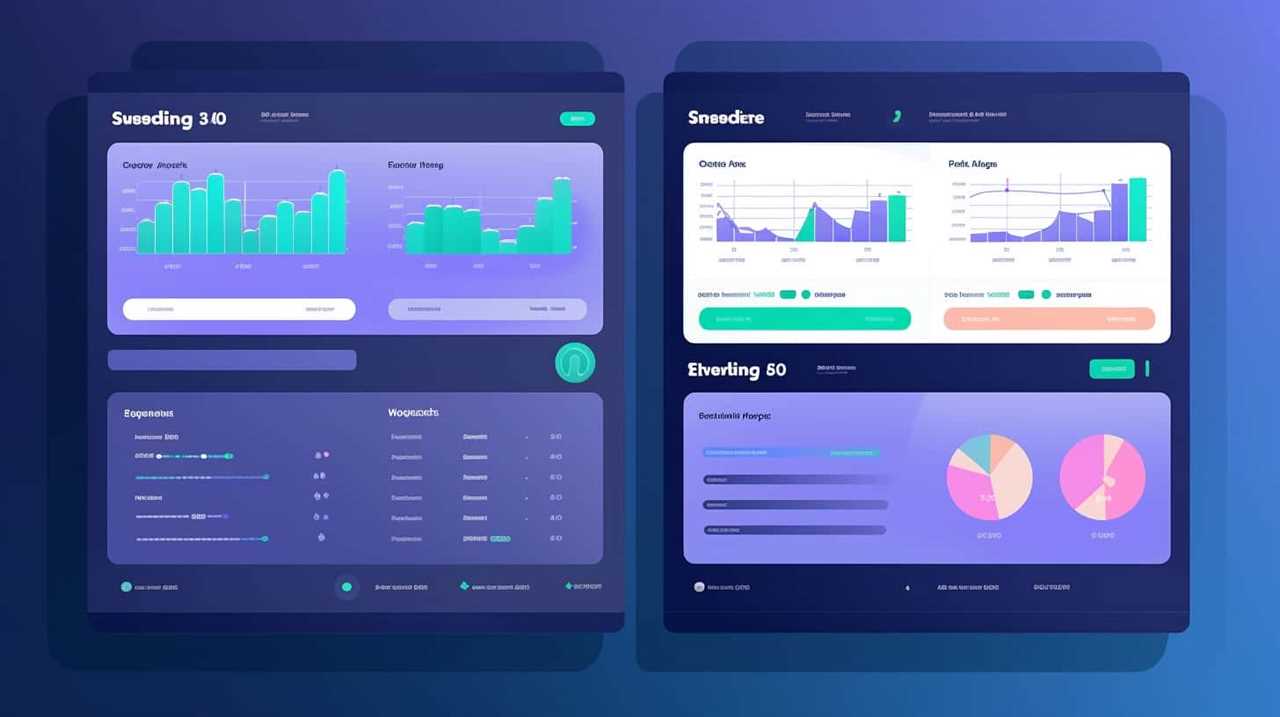Are you ready to master SEO in the age of artificial intelligence? We’re excited to share our insights about the enigma of RankBrain, making its secrets accessible to you.
Get ready to optimize your content, enhance user experience, and leverage AI tools for SEO success.
But that’s not all – we’ll also show you how to future-proof your strategies and adapt to RankBrain’s evolution.
It’s time to take your SEO skills to the next level and stay ahead of the game.

Let’s dive in!
Key Takeaways
- Traditional SEO tactics focused solely on keywords are no longer sufficient. SEO practitioners must embrace a holistic approach that prioritizes user experience, quality content, and natural language.
- RankBrain is a machine learning algorithm that helps Google understand the intent behind search queries. It uses artificial intelligence to interpret user intent and is one of the top ranking factors.
- When optimizing content for RankBrain, it’s important to focus on relevance and context when optimizing keywords. Incorporate keywords naturally to align with user search intent and consider the E-A-T factors (Expertise, Authoritativeness, Trustworthiness) when optimizing content.
- User experience is crucial for SEO. Websites with good UX tend to rank higher. Fast loading times, mobile optimization, and high-quality content all enhance user experience and improve SEO.
Understanding RankBrain’s Role in SEO
In our journey to unravel the mysteries of RankBrain, let’s delve into the crucial role this AI algorithm plays in shaping the landscape of SEO. Understanding the role of machine learning in SEO is essential for mastering the art of optimizing websites for search engines.
RankBrain, a key component of Google’s search algorithm, uses machine learning to analyze search queries and deliver more relevant results to users. Its impact on search rankings can’t be overstated. By continuously learning and adapting to user behavior, RankBrain helps Google understand the intent behind search queries, even those it has never encountered before.
This means that traditional SEO tactics that solely focus on keywords and meta tags are no longer sufficient. To succeed in the age of RankBrain, SEO practitioners must embrace a holistic approach that prioritizes user experience, quality content, and natural language.

Optimizing Content for RankBrain
Continuing from our previous discussion about the role of RankBrain in SEO, let’s now delve into optimizing content for RankBrain by considering user experience, quality content, and natural language.
When it comes to optimizing keywords for RankBrain, it’s important to focus on relevance and context. Gone are the days of keyword stuffing. Instead, aim for a natural incorporation of keywords that align with the user’s search intent.
In addition to keywords, RankBrain also takes into account the E-A-T (Expertise, Authoritativeness, Trustworthiness) factors. To optimize for E-A-T, ensure that your content is well-researched, credible, and written by industry experts. Back up your claims with reliable sources, and strive to provide valuable and trustworthy information to your audience.
To optimize content for RankBrain, keep these three key points in mind:

- Incorporate relevant keywords naturally.
- Establish expertise, authoritativeness, and trustworthiness in your content.
- Focus on providing a seamless user experience with valuable and high-quality content.
User Experience: A Key Factor for RankBrain
Now, let’s explore how user experience plays a crucial role in RankBrain’s evaluation of content.
Improving engagement and enhancing usability are key factors that RankBrain considers when determining the quality of a webpage. User experience metrics such as bounce rate, time on page, and click-through rate provide valuable insights into how users interact with a website. High engagement and positive user signals indicate that the content is relevant, useful, and satisfies the user’s intent. This, in turn, boosts the overall ranking of the webpage.
To enhance user experience, it’s important to focus on providing a seamless and intuitive navigation, optimizing page load speed, and creating high-quality, engaging content that addresses the user’s needs. By prioritizing user experience, website owners can align their content with RankBrain’s evaluation criteria, ultimately leading to improved search engine rankings.
Now, let’s delve into the next section and explore how leveraging AI tools can further enhance SEO success.

Leveraging AI Tools for SEO Success
We frequently leverage AI tools for SEO success, using them to improve our website’s ranking and visibility. AI-powered keyword research allows us to identify the most relevant and high-performing keywords for our target audience. By analyzing search patterns and user behavior, these tools help us optimize our content to meet the needs of our audience effectively.
Additionally, AI-driven link building strategies assist us in building high-quality backlinks that enhance our website’s authority and credibility. These tools analyze data from various sources to identify potential link opportunities and assess the quality of existing links.
Future-proofing SEO: Adapting to RankBrain’s Evolution
To ensure long-term SEO success, it’s essential to adapt our strategies and stay ahead of RankBrain’s evolving algorithms. As RankBrain continues to shape the search landscape, it’s crucial to understand its impact on mobile SEO.
With the increasing use of mobile devices for internet browsing, RankBrain prioritizes websites that are optimized for mobile users. This means that mobile responsiveness, fast loading speed, and user-friendly mobile experiences are now more important than ever before.

Additionally, RankBrain’s algorithm considers the role of backlinks in determining website authority and relevance. While backlinks are still significant, RankBrain emphasizes the quality and context of these links, rather than just the quantity.
As SEO professionals, it’s vital to continually adapt our strategies to match RankBrain’s evolving requirements and prioritize mobile optimization and high-quality backlinks.
Frequently Asked Questions
What Is the History and Development of Rankbrain?
The history and development of RankBrain revolve around its evolution and the crucial role of machine learning. It has significantly impacted the field of SEO by using AI to improve search results and user experience.
How Does Rankbrain Handle Different Types of Content, Such as Images or Videos?
When it comes to optimizing images and videos for RankBrain, we have to understand how this AI powerhouse handles different types of content. Discover the impact of RankBrain on visual content SEO.

Can Keyword Stuffing Still Be Effective With Rankbrain?
Yes, keyword stuffing is no longer effective with RankBrain. It prioritizes user intent and context over keyword density. To optimize for RankBrain, focus on creating high-quality, relevant content that meets the needs of your audience. This is the future of SEO in the AI era.
Are There Any Specific Industries or Niches Where Rankbrain Has a More Significant Impact on Seo?
In the healthcare and e-commerce industries, RankBrain’s impact on SEO can be significant. User experience plays a crucial role in RankBrain’s algorithm, making it essential to optimize websites for both relevance and user satisfaction.
Will Rankbrain Eventually Replace Human SEO Professionals?
RankBrain’s impact on SEO professionals is significant, but it won’t replace us entirely. AI has its strengths, but human expertise is still crucial for strategic planning, creativity, and adapting to the ever-changing SEO landscape.
Conclusion
In conclusion, mastering SEO in the age of AI requires understanding RankBrain’s role and optimizing content for it. User experience is crucial for RankBrain, making it important to prioritize user-friendly websites. Leveraging AI tools can greatly contribute to SEO success by analyzing data and making informed decisions.

As RankBrain continues to evolve, it’s essential to future-proof SEO strategies and adapt to its changes. Interestingly, a study found that websites ranking in the top three positions on Google have an average click-through rate of 36.4%.









